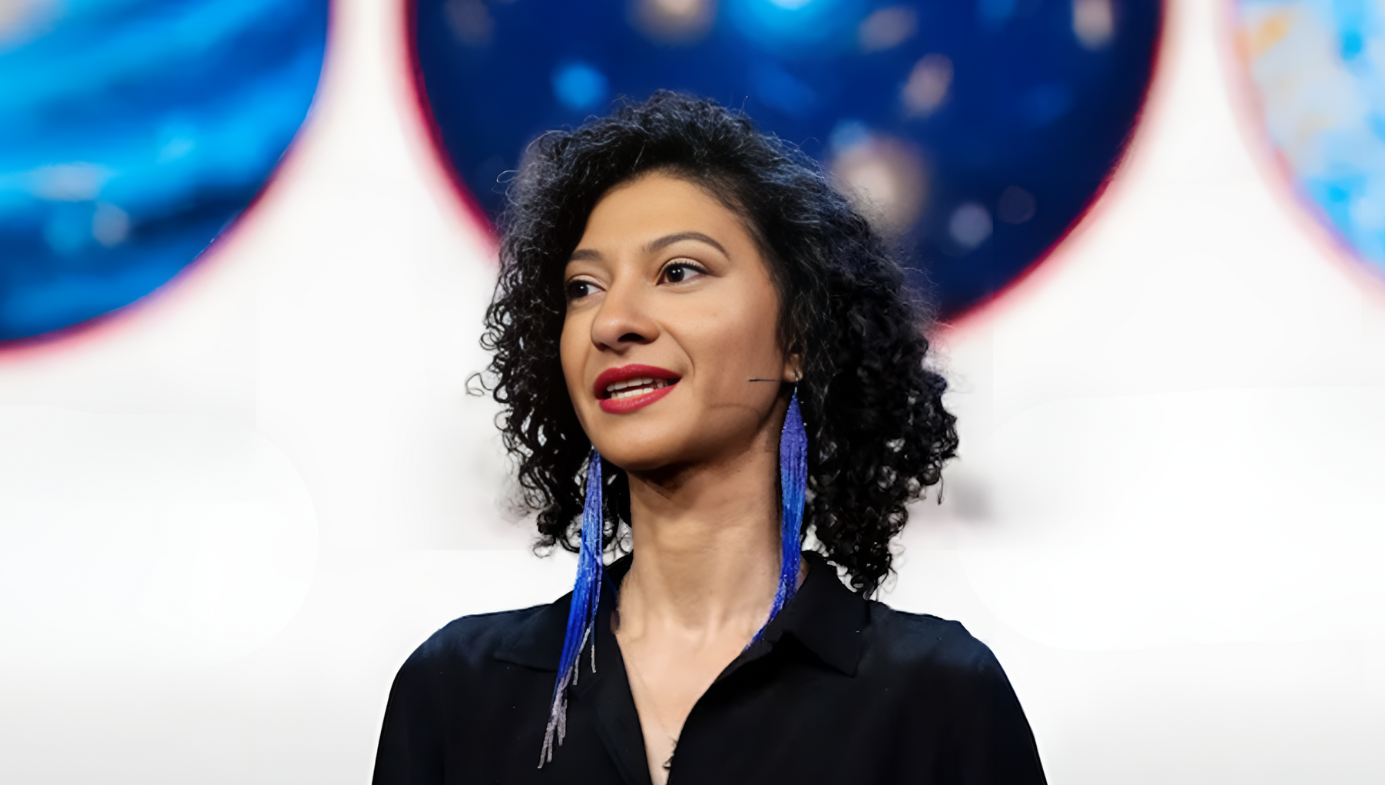Higher Education
Intersectionality’s Cosmic Inquisitor
Chanda Prescod-Weinstein has made a name for herself as one of STEM’s most implacable activists. Now the targets of her online attacks are fighting back.

A full audio version of this article can be found below the paywall.
On July 11, 2022, U.S. President Joe Biden revealed the first awe-inspiring infrared views produced by NASA’s James Webb Space Telescope (JWST). A project more than a quarter century in the making, the JWST represents a technological leap over its 1990s-vintage Hubble predecessor. Since the new sun-orbiting telescope began operation, it’s already yielded a number of spectacular discoveries, including the existence of complex organic molecules in a galaxy over 12-billion light years away.

Here on planet Earth, meanwhile, the JWST provided an occasion to revisit the extraordinary career of its namesake, a former Marine Corps pilot from Tally Ho, NC, who rose through government ranks to become the second most powerful official in the U.S. State Department; and then, more famously, NASA’s administrator from 1961 to 1968, a period during which America first began sending men into space.
Under Webb’s oversight, NASA became a public-sector leader in promoting equal opportunity and racial integration. As famed African-American astrophysicist and book author Hakeem Oluseyi has written, Webb was a “hero of diversity and inclusion in American government.”

And yet, in the lead-up to the JWST’s launch, there had been a very real possibility that Webb’s name would be stripped from the telescope—ironically enough, based on claims that he was actually a bigot.
The smoking gun, according to Webb’s critics, was a newly publicized quotation, dating to his tenure as Under Secretary to Dean Acheson at the State Department between 1949 and 1952: “It is generally believed that those who engage in overt acts of perversion”—a homophobic reference to gay men—“lack the emotional stability of normal persons.”
The claim took NASA’s own historians by surprise. While it’s common knowledge that homophobic attitudes and policies were scandalously prevalent in early Cold War-era Washington, this was the first time that Webb had been accused of personally demonizing gay men.
The claim was reported in 2015 by media pundit Dan Savage; as well as by Matthew Francis, a physicist and freelance journalist. Francis told readers that he’d learned about the Webb quotation from the Twitter feed of a University of New Hampshire (UNH) particle physicist named Chanda Prescod-Weinstein. In a widely circulated Forbes column, The Problem With Naming Observatories For Bigots, Francis wrote, “it’s easy for white male physicists like me to ignore the less savory aspects of our scientific heroes, but it’s long past time we stopped.”
Even as late as Fall 2022, months after the James Webb Space Telescope had begun operation, Britain’s Royal Astronomical Society was still instructing its editorial contributors to excise Webb’s name from any references. Instead, authors were to use the acronym JWST.

Activists demanded that NASA come up with a new name. Prescod-Weinstein herself, appearing as the first listed writer in a co-authored Scientific American article, suggested that NASA honour anti-slavery activist Harriet Tubman, on the astronomical basis that “Tubman almost certainly used the North Star, just as it is documented that others did, to navigate her way to freedom.”
A trove of internal NASA documents obtained by a Nature writer indicates that Prescod-Weinstein’s many tweets on the subject were generating considerable chatter at NASA headquarters. This was the heyday of America’s post-George-Floyd reckoning, when statues were being toppled all around the United States. The idea that Prescod-Weinstein and her fellow activists could turn the JWST into the Harriet Tubman Freedom Telescope—while transforming themselves into social-justice legends in the process—didn’t seem that far-fetched.

But it was not to be. In early 2021, the case against Webb began falling apart, in large part thanks to a historical investigation conducted by the aforementioned Hakeem Oluseyi, 56, now a visiting professor at George Mason and Princeton Universities.
After becoming interested in Webb’s back story in 2015, Oluseyi raised the subject with NASA’s leadership during his subsequent stint as Space Sciences education manager for the agency’s Science Mission Directorate. As Oluseyi discovered, the case against Webb was based on misinformation that had been added to his Wikipedia entry in 2003 and 2011.
The homophobic quotation in question is real, he learned, but Webb never said it. Whoever first mistakenly associated these words with Webb had apparently confused Webb’s position with that of another State Department official named John Emil Peurifoy, a bona fide bigot who’d helped stir up Washington’s infamous Lavender Scare with lurid tales of a “homosexual underground.”
In late 2022, an independently produced 89-page report from NASA’s chief historian, Brian Odom, backed up Oluseyi’s conclusions, finding that there was “no available evidence” linking Webb to a single action “related to the firing of individuals for their sexual orientation.”

The Royal Astronomical Society backtracked, and began allowing authors to use the W-word. Francis’ column was scrubbed from media sites, and its embittered author wrote a postscript informing readers that he’d no longer be writing about the telescope because “the name choice makes [me] feel excluded from the excitement.” One of Prescod-Weinstein’s co-authors, Lucianne Walkowicz, quit her role on a NASA advisory committee following a failed, last-ditch internal effort to discredit Oluseyi’s research.
The whole activist campaign turned out to be a pointless distraction; and, for those who’d bungled Webb’s historical record, professionally humiliating. At the very least, however, it was over.
But not for Prescod-Weinstein—not by a long shot. Nor for Oluseyi, whom Prescod-Weinstein has spent the last three years attacking in blog posts and lengthy, sometimes obscenely-phrased threads on X (formerly Twitter).






